Digitalization: The Economy booster
Digital wave is taking shape in various segments of business transactions including manufacturing, Insurance, Banking, Law, Legal, Education etc. According to Gartner, Digitalization is the use of digital technologies to change a business model and provide new revenue and value-producing opportunities; it is the process of moving to a digital business. Business and IT are jointly coming up with ideas to simplify B2B or B2C accessibility from both internal staff and user base standpoint. Instant solutions and actions are being presented as a part of analytics from streaming data. Digital applications are being integrated in the solution framework of social issues such as waste, traffic, law, policy management etc.
Government, policy makers, industrialists and organizations are promoting digitalization in their respective area in the name of “Smart Data Center”, ”Smart Tuition”, ”Smart Grid”, “Smart City”, ”Smart Home” etc. There are several pieces that need to play in coordinated fashion ranging from ICT (Information, Communication and Technology), Public infrastructure (Road, Water, Sanitation, Bridge etc.) to Policy (e.g. Net Neutrality, Spectrum range and auction,) etc. We have been observing rate of urbanization picking up pace requiring us to transform traditional infrastructure and related policy to robust ICT set up at war front enabling team to monitor, analyze and plan consumption of natural resources towards smart city development. BCG (Boston Consulting Group) has predicted digital economy growth more than 15-20% in developing countries.
While policy, legislations etc. are quite important, I, however, would like to emphasis about ICT here while focusing necessary steps for digital infrastructure to keep up with the demand for digital services and facilitate the growth and development of a vibrant global digital economy.
Challenges
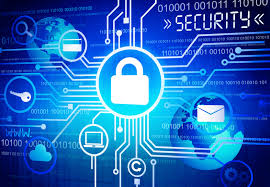 As digital wave continues to expand business by creating multiple innovative flexible channels such as invoking online requests through twitter, sending query though whatsapp or facebook, uploading insurance claim through mobile application, streaming video content from regular to 4K and many more, demand of high bandwidth secured network channel also continues to increase while putting lot of stress in infrastructure at data center to process load within SLA. SMAC (Social media interactions, Mobile applications, Big Data & Advance analytics, Cloud Computing) and IoT(Internet of Thing – comprising of edge servers, objects, sensors, processors & inter devices protocols) enabled with AI(Artificial Intelligence component) along with evolving software defined models (SDS,SDN,SDDC etc.) are fueling up the complexities and adding up load to the existing/traditional data center. More interconnected devices lead to more interaction and that lead to more transactional data while increasing load to upload, process and crunch for advance analytics thereby stressing all over infrastructure elements ranging from local edge processor, power consumption, network bandwidth, security algorithm to load processing etc. Small hiccup at any layer will impact user experience while impacting fledging digital economy. Security continues to be the challenge and there is seemingly a race between IT evolution and bad guys, please read my blog on this for more @ http://www.techmanthan.com/index.php/2015/07/19/it-security-race-between-it-evolution-and-security-threat/. Key attributes of Digital economy are being addressed using IT solutions such as, host same data of individuals to different systems for respective usages (e.g. One patient has one medical record in cloud while being used by multiple medical, insurer practitioners), interoperate data across devices (such as transfer same content irrespective of host OS to android, IOS, Windows etc. without losing the content and context), connect multi public department using one digital id as SSO (Single Sign on) etc. while raising questions on easy accessibility, authenticity and security. Billions interconnected devices tapping smart grid, finance, health monitoring, automobile functions etc. exposes wide opportunities for bad guys to attack and steal information and unless security holes are plugged everywhere data security threat continues .
As digital wave continues to expand business by creating multiple innovative flexible channels such as invoking online requests through twitter, sending query though whatsapp or facebook, uploading insurance claim through mobile application, streaming video content from regular to 4K and many more, demand of high bandwidth secured network channel also continues to increase while putting lot of stress in infrastructure at data center to process load within SLA. SMAC (Social media interactions, Mobile applications, Big Data & Advance analytics, Cloud Computing) and IoT(Internet of Thing – comprising of edge servers, objects, sensors, processors & inter devices protocols) enabled with AI(Artificial Intelligence component) along with evolving software defined models (SDS,SDN,SDDC etc.) are fueling up the complexities and adding up load to the existing/traditional data center. More interconnected devices lead to more interaction and that lead to more transactional data while increasing load to upload, process and crunch for advance analytics thereby stressing all over infrastructure elements ranging from local edge processor, power consumption, network bandwidth, security algorithm to load processing etc. Small hiccup at any layer will impact user experience while impacting fledging digital economy. Security continues to be the challenge and there is seemingly a race between IT evolution and bad guys, please read my blog on this for more @ http://www.techmanthan.com/index.php/2015/07/19/it-security-race-between-it-evolution-and-security-threat/. Key attributes of Digital economy are being addressed using IT solutions such as, host same data of individuals to different systems for respective usages (e.g. One patient has one medical record in cloud while being used by multiple medical, insurer practitioners), interoperate data across devices (such as transfer same content irrespective of host OS to android, IOS, Windows etc. without losing the content and context), connect multi public department using one digital id as SSO (Single Sign on) etc. while raising questions on easy accessibility, authenticity and security. Billions interconnected devices tapping smart grid, finance, health monitoring, automobile functions etc. exposes wide opportunities for bad guys to attack and steal information and unless security holes are plugged everywhere data security threat continues .
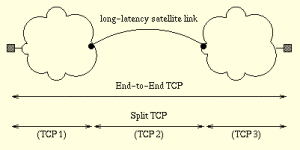 Low latency and upload/download speed requirement is catching up while volume and distance are increasing. We have LTEA(Long term evolution Advance) and 5G connection that requires latency not exceeding to 40 ms while delivering interactive video over mobile connection challenges the current network infrastructure including media (air and physical) set up and spectrum(frequency bands) distribution system. Digital economy will not be effective unless infrastructure is transformed to accommodate digital requirement. Growing market and developing regions primarily face two challenges in the landscape of ICT; Network Capacity and Network Coverage. The pace of mobility is much faster as compared to broadband based internet connection, but the lagging adoption of LTE is becoming an impediment.
Low latency and upload/download speed requirement is catching up while volume and distance are increasing. We have LTEA(Long term evolution Advance) and 5G connection that requires latency not exceeding to 40 ms while delivering interactive video over mobile connection challenges the current network infrastructure including media (air and physical) set up and spectrum(frequency bands) distribution system. Digital economy will not be effective unless infrastructure is transformed to accommodate digital requirement. Growing market and developing regions primarily face two challenges in the landscape of ICT; Network Capacity and Network Coverage. The pace of mobility is much faster as compared to broadband based internet connection, but the lagging adoption of LTE is becoming an impediment.
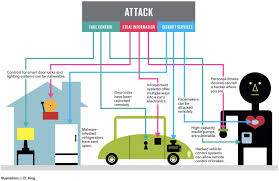 IT need to address privacy in the midst of billions of interconnects. Aggregated data from all of digital equipped devices (IoT enabled, wearable, sensors, web transactions etc.) enables new and interesting services that also challenge us to create new mathematical tools and algorithms to extract value while respecting people’s rights and sensitivities around personal information. This requires us to embrace “Privacy by Design” philosophy.
IT need to address privacy in the midst of billions of interconnects. Aggregated data from all of digital equipped devices (IoT enabled, wearable, sensors, web transactions etc.) enables new and interesting services that also challenge us to create new mathematical tools and algorithms to extract value while respecting people’s rights and sensitivities around personal information. This requires us to embrace “Privacy by Design” philosophy.
In education sector distribution channels are still fairly traditional, while few universities and educational institutions are gradually picking up pace towards digitalization modal such as MOOC (Massive Online Open Course, such as Coursera, Stanford Online etc.), digital library etc. through internet and smart devices. I guess, challenge in low adoption in digital mostly lie in the perception of not a strong requirement, less having modern IT awareness, traditional IT set up and obviously fewer budgets for IT expansion. In business application landscape, our websites or mobile applications are flooded with content with 2nd or 3rd language of a particular country, for example today we have more % of websites in English than people with first language as English. This is an impediment towards digital economy expansion and requires IT to put up tools to convert or translate to the primary language. Smart city is a big topic encompassing Energy, Transportation, Energy, Water, Waste, Sanitation, Social, Building etc. and I don’t intend to cover all that except emphasizing the burning need to address energy consumption and wastage, I feel, this is the core of any development including digital economy. Infrastructure to design, develop, implement and host smart grid, meter and home appliances leading to consumption behavior all need to be deeply integrated.
Traditional vs Modern Infrastructure landscape
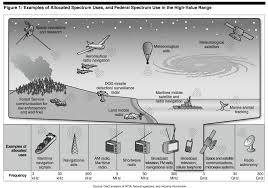
Capacity, Bandwidth, Latency: Network capacity and latency requirements can be greatly addressed by fiber optics. However, “last Mile” is something that can be addressed by jointly process and technology. There is an urgent need for more mobile spectrum(regulated and un regulated types) bands with the mix of low to mid to high frequency range to accommodate both network capacity and coverage. ICT needs to invest into meaningful spectrum allocation such as transferring spectrum allocation of multiple bands for analogue TV, defense etc. to meaningful and advance communication such as 3G, LTE. We would need more unregulated spectrum similar to 2.4, 5.0 GHz wireless for home wireless router to support IoT devices such as home thermostat, car, refrigerator, electricity, washing machine and several devices intercommunication purposes. Traffic compression technique need to be revisited to reduce traffic volume to consume BW efficiently. Software defined and virtualization technique (SDN/NFV) optimizes network resource consumption while improving overall network experience such as fast network service provisioning, improved capacity utilization etc.
Speed: Distributed processing environment involving multitier architecture encompassing multitude of protocols and varying processing speed at nodes should leverage Mainframe system for enhanced heavy load processing and increased security system. This combined architectural framework should help digital expansion.
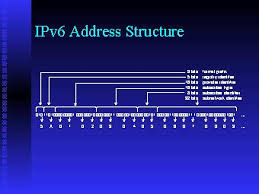 Volume & Addresses: Internet of things framework shall be connecting devices up to the range of 40-50billion in next 4-5 years and that will require research and development in secure protocol, unique spectrum, its allocation and standardization followed by implementation in ICT. Internet IP addresses issued by INAC will need to be switched from IPv4 (32 bit address) to IPv6 (128 bit address) in a seamless manner without impacting existing network set up (2128 addresses is incredibly large) to address growth from IoT and digital applications.
Volume & Addresses: Internet of things framework shall be connecting devices up to the range of 40-50billion in next 4-5 years and that will require research and development in secure protocol, unique spectrum, its allocation and standardization followed by implementation in ICT. Internet IP addresses issued by INAC will need to be switched from IPv4 (32 bit address) to IPv6 (128 bit address) in a seamless manner without impacting existing network set up (2128 addresses is incredibly large) to address growth from IoT and digital applications.
Security & Analytics: We need to have plans that go beyond traditional preventive controls such as firewalls, antivirus and vulnerability management, and follow a more global and integrated control in all security areas. Big data and advance analytics applications should be leveraged to capture & predict security alarm while instituting solution right at the end points as I mentioned in my blog last week. Security should be an element right from requirement specification to design to the infrastructure segment including cloud solution. SMB are generally the easy target by the attackers, since they wouldn’t have good security dollar parked, I advise none of the SMB should exist in their own set up small server room unless they have robust security solution but in the public cloud. Public cloud vendors (Azure, AWS etc.) are investing good to make their offering lucrative and secured. Digital economy must need secured platform. IT establishments should move away from building on top of an ageing infrastructure system to cloud set up or revamp the infrastructure afresh. The pace of digital economy needs agile and scalable infrastructure that can’t be commanded by old style method. Infrastructure service model itself should be digital to support digitalization or digital economy, whether one require to install packet sniffer to skim (IPS and DPS) and control security, privacy and confidentiality or enable technicians to manage and administer remotely using flexible secured applications running is his smart device or automating good amount of infrastructure administrative workflow. Security at IoT level needs quite an exhaustive set up by employing light secure data transfer protocol (light version of HTTPS), light encryption algorithm yet difficult to break etc.
Application attributes: Local language has been one of the most vital elements to spread base for digital economy and IT should factor that along with English in putting business application through. Smart applications are being designed as role based as well as requirement based, such as a Linux administrator in IBM Brazil will have the smart application duly switched to his role and language he is comfortable in the similar way as Oracle DBA in IBM India using same smart application but using DBA as role and English as language. Such digital attributes help IT organization to grow while simultaneously supporting the digital economy. Subscriber base in developing country such as India, China etc. will be increasing more in the digital space as compared to the developed nations, reason being existing issues are more and digital could provide easy access to address those problems. For example, average lead time for passport application, land registration, driving license etc. would be 10 times (approximately) in developing countries from developed countries, once we have applications with adaptive languages and adequate control on verification available in multiple devices, people will start flocking to such smart applications. So we are diverting crowd towards digital path requiring us to equip infrastructure with optimum storage, network, security control, processors, software and business applications aligning with the need of digital economy. Digital application opens up opportunity in the space of API (application programming interface) and IT take services of language conversion or translation.
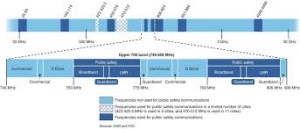 Policy and Regulation: Spectrum distribution and allocation, IP packets neutralization, switching from big tower to small cell towers, value based pricing factoring usage, speed, latency, bandwidth, time of the day (low cost during off business hours) etc. are some of the factors that should be reviewed and redesigned to embrace healthy competition, experimentation and drive innovation while boosting the path for digital economy. Policy and regulation need to simplify the process to host adequate infrastructure such as installation of fiber optic, switching network between regulated to unregulated and vice versa, re-distribution and fragmentation of spectrum towards usage intensive area etc. to host and grow digital ecosystem. The sheer number of IoT connected devices and related requirements require more short range of connection than MAN, Satellite, WAN or cellular based and at present most of that can be addressed with existing unregulated spectrum e.g. 802.xx.yy, but with pace of IoT growth, we may have to further increase unregulated spectrum. Range of spectrum should be categorized per the usage of applications; viz. 1 Ghz of frequency range is good for applications that require wide range of communication such as sensor; whereas 5GHz and above frequency range is good for intense data and short distance communication such as HD media streaming in the house. We require global standard to run policies and protocols around security and interoperation involving low powered, low memory and low processing equipped devices else we can’t unleash the benefit of IoT vis-à-vis grow digital economy.
Policy and Regulation: Spectrum distribution and allocation, IP packets neutralization, switching from big tower to small cell towers, value based pricing factoring usage, speed, latency, bandwidth, time of the day (low cost during off business hours) etc. are some of the factors that should be reviewed and redesigned to embrace healthy competition, experimentation and drive innovation while boosting the path for digital economy. Policy and regulation need to simplify the process to host adequate infrastructure such as installation of fiber optic, switching network between regulated to unregulated and vice versa, re-distribution and fragmentation of spectrum towards usage intensive area etc. to host and grow digital ecosystem. The sheer number of IoT connected devices and related requirements require more short range of connection than MAN, Satellite, WAN or cellular based and at present most of that can be addressed with existing unregulated spectrum e.g. 802.xx.yy, but with pace of IoT growth, we may have to further increase unregulated spectrum. Range of spectrum should be categorized per the usage of applications; viz. 1 Ghz of frequency range is good for applications that require wide range of communication such as sensor; whereas 5GHz and above frequency range is good for intense data and short distance communication such as HD media streaming in the house. We require global standard to run policies and protocols around security and interoperation involving low powered, low memory and low processing equipped devices else we can’t unleash the benefit of IoT vis-à-vis grow digital economy.
Skill, tools and Process
Apart from innovative business product that create unique user experience, innovative policy to balance multiple stakeholders from business, government to IT player, we need special skill set in IT landscape to nourish digital evolution. I am picking certain subject areas emphasizing its skill domain and application that I feel will be very rewarding to both digital expansion and IT practitioner growth.
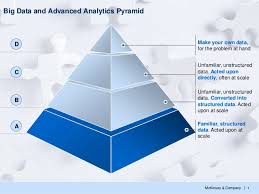 Advance Analytic & Big data is catching up quite well in this era of digital economy that potentially addresses the need of high volume of data with fast processing computers to run complex mathematical algorithm to generate prediction while creating warning system including flood control, capacity management, processing requirement, inventory & warehouse management, marketing campaign to sale response etc.
Advance Analytic & Big data is catching up quite well in this era of digital economy that potentially addresses the need of high volume of data with fast processing computers to run complex mathematical algorithm to generate prediction while creating warning system including flood control, capacity management, processing requirement, inventory & warehouse management, marketing campaign to sale response etc.
IoT involves research and development in the area of spectrum and frequency band (regulated to unregulated usage), security and interoperability protocols, low powered and memory devices etc. Courses are being added in institutions as and when new concepts are introduced. Industries are investing in this sector; e.g. Cisco is doing quite an intensive research in shaping smart city model and lab to design IoT devices and protocols.
Cloud is undisputed “The” go forward model for hosting & managing IT services, and has been evolving for several years uncovering various design models viz. IaaS, PaaS, SaaS, SDDC etc. including virtualization at its base. Industries are putting effort in the area of Cloud administration, storage solution, security & network solution etc. There are requirements in industries in the area of cloud & VM migration, software & business application migration, Support service model transformation whether it is RIM or on premises DC Management across various roles viz. Solution Architect, PM, Migration analysts etc.
Security is the area that is getting hot and important day by day. As and when there is new concept, new theory or new automation such as IoT, Big data, BYOD, Mobile computing and many more, security solution framework gets reviewed and possibly redesigned. Though security touches upon all key elements viz. certification process (VeriSign, DigiCert etc.), protocol (HTTPS, PKI- Public key infrastructure), encryption algorithm (RSA, AES etc.), Global policy and regulation, Industrial compliance (PCI-DSS, HIPPA etc.) and many more, but remains an area that keeps uncovering new dimensions and continues to excite information security staff with new challenges and threats.
Social and Mobile computing is the main driver for digital economy. This lays out the platform to connect masses by enabling easy and flexible user interface. This area has changed the programing paradigm from science to an art while visualizing bigger picture and conceive design elements. We have come a long way from machine language to procedural language to object oriented to event based while touching the human emotion. This area is quite hot and still growing.
Summary
Digital economy and relevant Infrastructure support is a big topic and I tried my level best to connect relevant points above. This is a space that connects almost all sections of society and offers tremendous opportunity to improve quality of life by virtue of advance ICT technologies and ideas. Essential players are obviously government, IT staff, business and end users. My attempt has been to highlight points from each dimension such as Spectrum fragmentation and introduction of relevant policy by government, mobile computing and usage by end users, unique user experience product design by business and modern ICT tool, technologies and process by IT practitioners. In the gist, Infrastructure to support Digital Economy has to be Digital. Newer application development needs to have variety of demographic users, big data, security & performance in the design methodologies. Digital ecosystem workflow involves data generation from low cost sensors to low to high spectrum to network to cloud infrastructure to Smart application to data warehouse for advance analytics model and reporting etc. is invigorating the digital ecosystem in a continuous manner. We are going through initial phase of digital evolution, and more innovation, theory and concepts will unfold down the lane, requiring our ICT set up be robust enough and sustain change and growth simultaneously. We need to stay agile and informative while consuming the digital usage, contributing bit of our strength in form of standard code, ideas and imparting knowledge to the whole ecosystem.